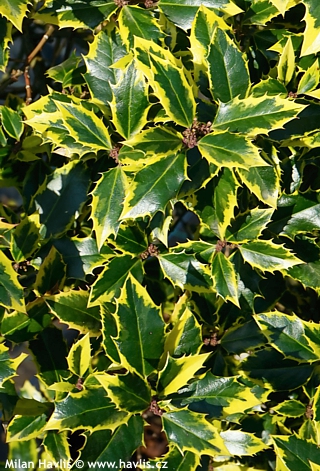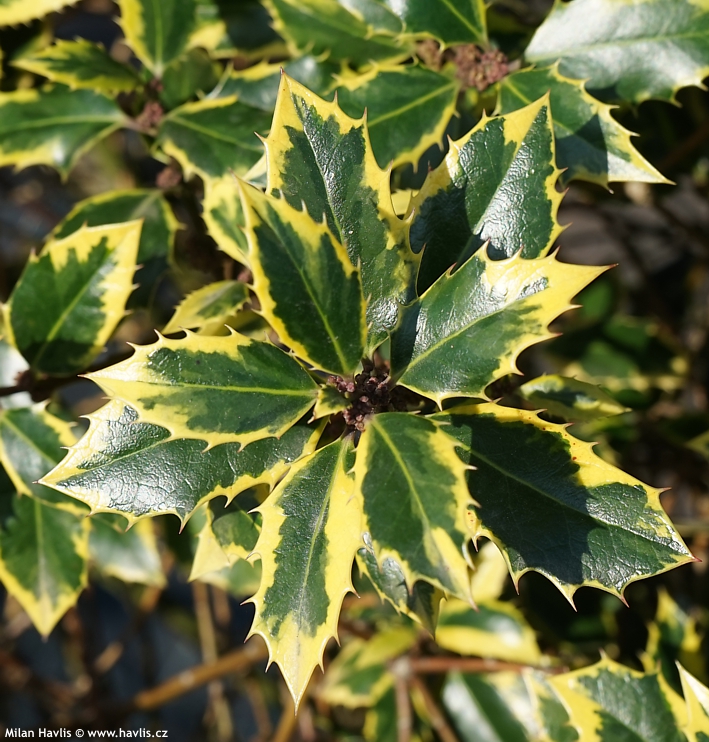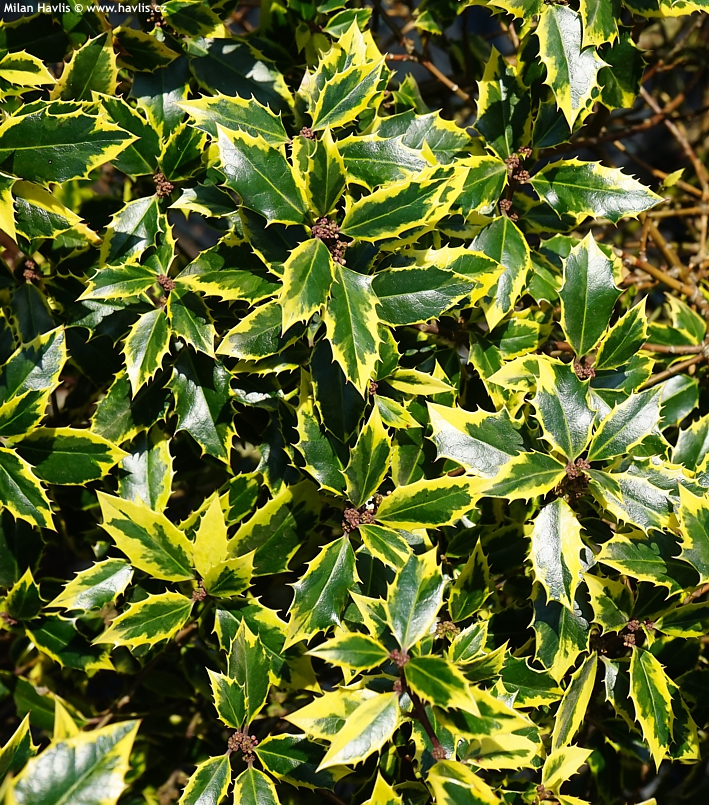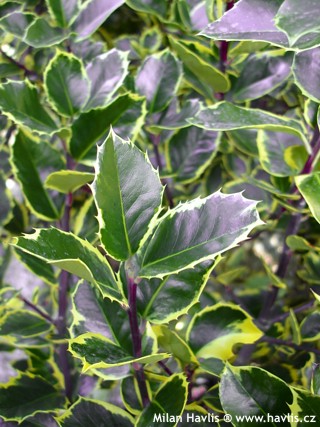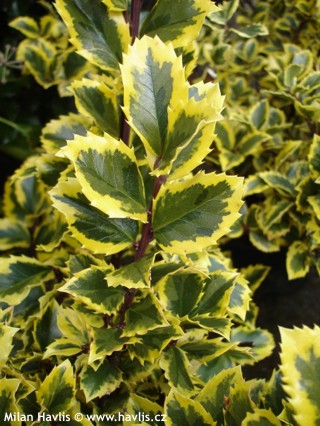Ilex aquifolium (syn. 'Waterer's Gold') 'WATERERIANA' English holly - male
size/type
medium-sized shrub,taller shrub
usual height
2-3m
usual width
1,5-2m
leaves
evergreen broadleaf
colour of leaves
location
full to partial sun
soil type
acidic (peaty)
soil moisture requirements
evenly moist (dislikes drought)
USDA zone (lowest)
5b (down to -27°C)
winter protection
for zone 5+6

for zone 7

categorized
Ilex
English hollies are among the most common evergreen and native plants of milder parts of Europe with high humidity – British Isles, north France, Benelux countries, and milder parts of north Germany. Various species form trees, shrubs, or thickets. They are absent from natural Central European landscape but can be cultivated without problems. They are renowned for glossy, often prickly leaves, and multiple variegated forms have been selected for garden cultivation.Description of the plant:
Watereriana or Waterer’s Gold is a beautiful variety of male English holly. It is a slow growing gem with variegated foliage. Its evergreen leaves are dark green in the centre and soft yellow at margins. They are softer and thinner as opposed to i. aquifolium and look more like those on hybrid blue hollies. Young leaves bear small spines but as the plant grows and matures new leaves are eventually borne completely spineless (entire). It grows rather slowly, 8-10 cm per year, into a broadly pyramidal to somewhat rounded, compact, and dense shrub with purple red young twigs. Being a male plant, its pollen may serve to pollinate most female hollies but the plant itself does not produce any berries.
Grow hollies in moist but well-drained, fertile soil. They can take periods of drought once established but dislike compacted, heavy-clay-based soils that turn very dry in summer, and often too wet in winter. If your soil is such, dig the planting hole only half the depth of the root ball, refine what you dig out and mix well with quality substrate of highly acidic level (low pH value). Using this mixture make a gradual slope from the stem to the original ground level and tamp it down as much as you can. Your root ball should not look like a molehill but more like a wide and flat mound. Mulch it well and keep watering it more often as it will be more prone to drying out as opposed to most common flat-in-the-ground transplanting. Hollies do best in full sun but can also grow in shade where they will lose their compact habit. Before and during winter when the soil is not frozen provide good watering. Hardy to about -27°C (USDA zone 5b).
Last update 30-12-2020
QUICK PRICE OVERVIEW
CURRENTLY SOLD OUT
WANT TO TRY A SIMILAR PLANT?












